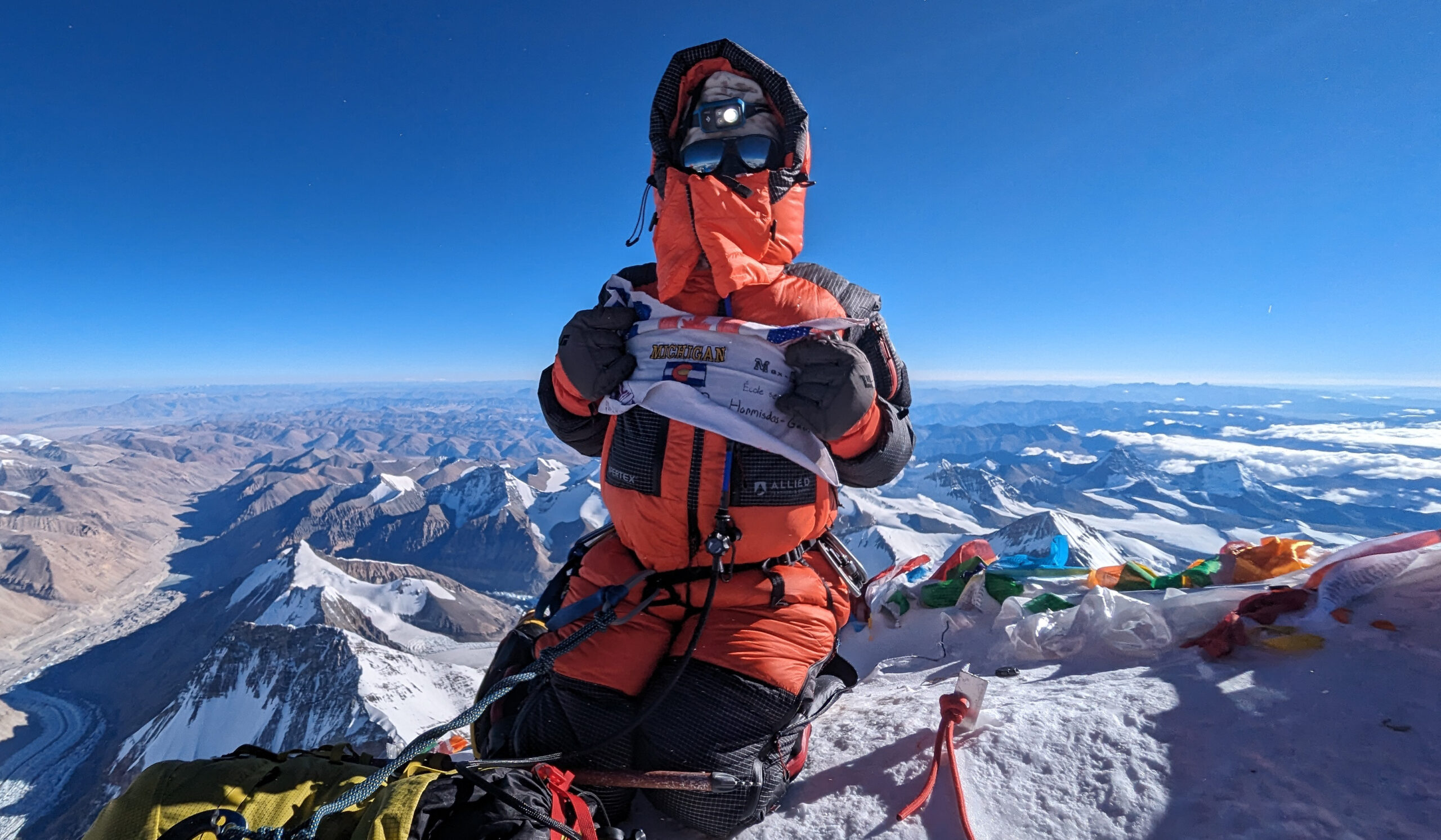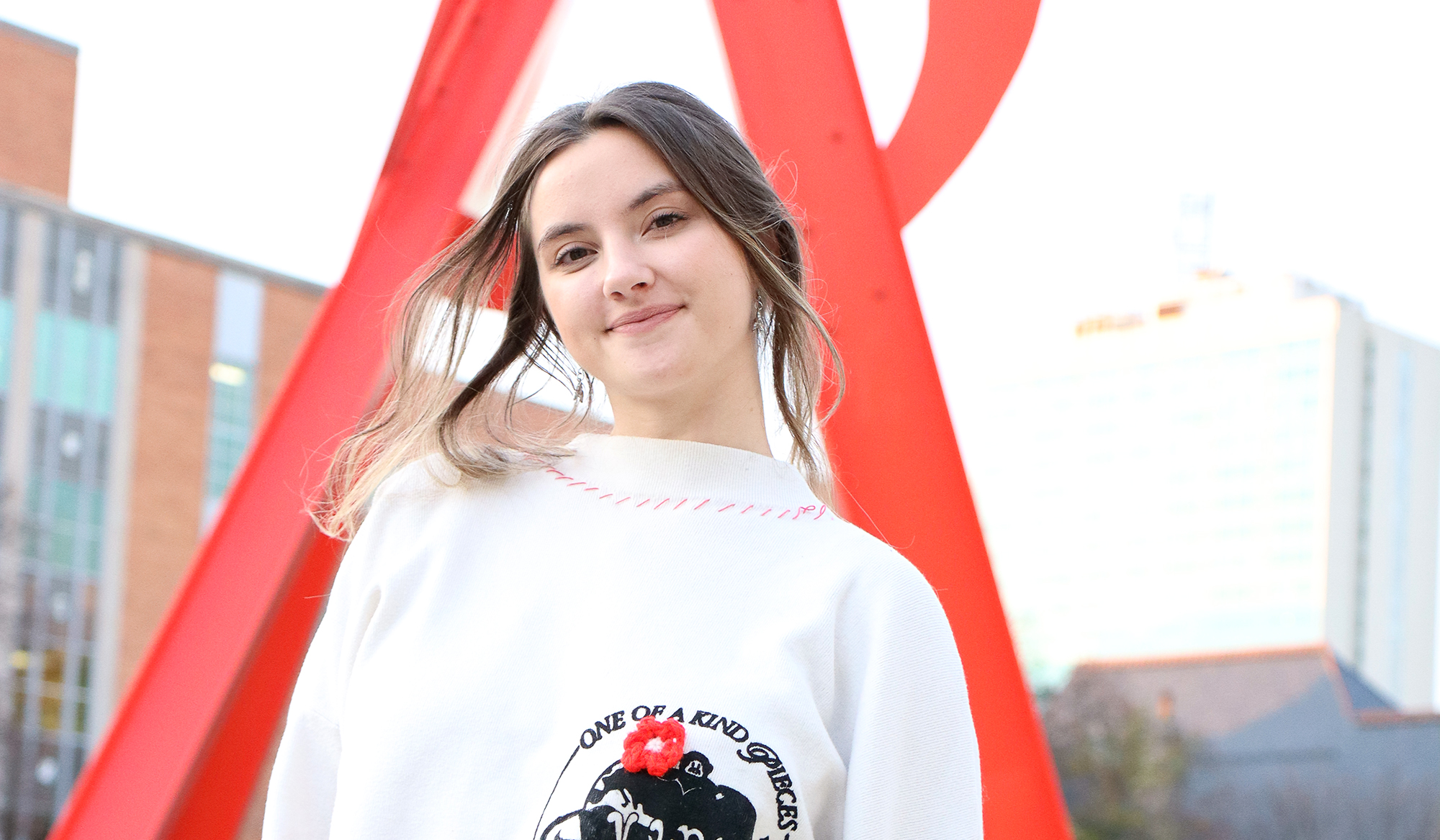In five large and two small labs in the medical school, anatomical donors make it possible for students to learn human anatomy effectively.
“There’s no way to learn like the way you can from seeing the anatomy as it is in the body and feeling the planes between structures,” says Mary Orczykowski, who teaches anatomy and is the co-curator of the lab. “You can’t replicate working with donors by working with plastic models and looking at drawings.”
When a donor dies, a funeral director informs the Anatomical Donations Program that the donor is ready for U-M. Funeral homes use a private dock leading to a private elevator that takes donors to the Anatomical Donations Program.
“This has refrigeration, special embalming stations, a storage area for donors, and a crematorium,” says Glenn Fox, ’00, MS’02, PhD’06, director of the program.
Since donors must last longer in labs than for a funeral home visitation, specialized embalming procedures are used by professionals with training in mortuary science. Neutralizing solution is injected after embalming fluid, reducing formaldehyde fumes, and a strong ventilation system reduces exposure.
Then students and researchers get to work.
They traverse a long corridor with blue doors that open into large rooms. Narrow tables holding full-body donors line the length of a room on both sides; the donors are covered with sheets when nobody is working. Eight students work with each donor, two at a time. Students meet their donors on the first day of lab and learn some of their medical histories.
“It feels personal,” Orczykowski says, who tells students that every donor elected to come to U-M to contribute to their education. “You can’t donate your body ‘to science.’ You donate it to a particular program at a particular institution.”
“A lot of our trainees view these donors as their first or one of their first patients,” Fox says.
Shelves hold plastic models and there are skeletons, too. A computer for each student allows them to check diagrams and lab instructions.
The U-M anatomy curricula, available online to all, are used by medical schools around the world. While most donations are used by U-M students or researchers, U-M shares donors with other universities or health systems by special agreement.
“We work cooperatively. It’s never a race or a competition,” Fox says.
The program cooperates with Gift of Life, an organ donation program, as well. Individuals can register for both and if organs are not usable for an injured or ill person, the donor goes to the Anatomical Donations Program.
Typically, a donor will pre-register, but the next of kin are also asked for consent.
“We like people to understand how their loved ones may be used,” Fox says.
Families may request that ashes be returned to them after their time teaching is completed, or ashes can be buried at a memorial garden at Washtenong Memorial Park in Ann Arbor.
To honor their donation and “gift of knowledge,” the Anatomical Donations Program holds a public memorial service for donors’ families every year in Hill Auditorium. The 2023 ceremony will be held on June 20.
Fox says anatomical donations are vitally important to the education of health care students along with research.
“These donors save and improve the quality of a tremendous number of lives, and we are all the direct or indirect beneficiaries of their gifts of knowledge,” he says.
Interested in making an anatomical donation or learning more? Email [email protected] or call 734-764-4359.
Davi Napoleon, ’66, MA’68, is a freelance writer and theater historian.





